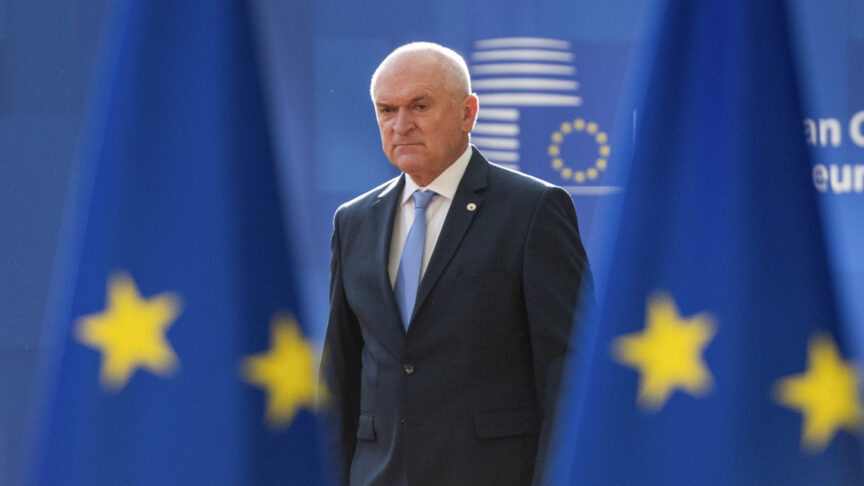The underestimated economic threat from the White House
Given changing global growth dynamics, Donald Trump’s trade policies might just transform from a nuisance into a threat to the euro area’s recovery
When Donald Trump became president of the United States roughly two years ago, there were two schools of thought on how he would conduct his trade policy. One predicted that Trump would immediately follow through with some of his more outrageous campaign pledges (such as punitive tariffs on all imports from China in the order of 30-40 percent) and cause enormous harm to the rest of the world, including Europe. The other held that career officials and relatively sensible policy advisers would moderate Trump’s behaviour, and that US trade policy would allow for business as usual (I described these possible scenarios immediately after the 2016 election that brought him to power).
Unfortunately, Trump’s policies might not prove so benign in future. Further escalation in the US-China trade dispute is on the cards.
During Trump’s first two years in office, neither of these predictions has proven entirely accurate. Trump escalated US trade disputes with Canada and Mexico, and introduced tariffs on steel imports. But he de-escalated shortly thereafter. After making a lot of noise about cancelling the North American Free Trade Agreement, the US swiftly negotiated some changes to the deal but did not retreat into regional economic isolationism. Trump threatened to impose car tariffs on the European Union but did not follow through – perhaps due to a meeting with European Commission President Jean-Claude Juncker, who warned that EU retaliatory tariffs could hurt key Republican constituencies. While Trump introduced some tariffs on some Chinese exports, he stopped short of anything that would seriously disrupt Sino-American trade.
Moreover, in late 2017, Trump signed into law a major tax reform bill that widened the US fiscal deficit but, arguably, boosted domestic economic growth. Despite trade tensions, the move led to an increase in US imports, thereby supporting the global economy.
Hence, Trump’s economic policies have not weighed on global economic growth. In autumn 2016, the International Monetary Fund predicted that the global economy would grow by 3.4 percent in 2017 and 3.8 percent the following year. Actual growth proved to be slightly higher than forecast, due to the performance of economies outside the US.
Unfortunately, Trump’s policies might not prove so benign in future. Further escalation in the US-China trade dispute is on the cards. Trump has threatened to hike tariffs on $200 billion worth of Chinese exports to the US from 10 percent to a punitive 25 percent on 1 March – unless Beijing makes significant concessions. The current round of US-China trade negotiations is deadlocked and, more importantly, it is questionable whether Beijing is willing or able concede much more given that Trump’s motives in the dispute are unclear (as I discussed last year).
From a European perspective, the current phase of trade escalation is easily the most dangerous so far. The initial trade skirmishes took place against the background of strong global economic growth. In Europe, memories of the euro crisis were just receding, risk premiums were falling, and businesses believed that President Emmanuel Macron’s reforms would provide impetus to both the French economy and the wider eurozone. Thus, the global economy took the initial phase of Trump’s trade war in its stride.
The current escalation, in contrast, comes at an unfortunate moment for Europe’s economy. Uncertainty stemming from the possibility of a no-deal Brexit is weighing on business sentiment across the continent. The car industry is struggling with the fallout of a botched transition to new emissions-testing standards and consumers are becoming more wary about the future of internal-combustion engines. Purchasing manager surveys point to a contraction in the German manufacturing sector. And Italy has entered a recession thanks to its government’s plans to increase the national deficit beyond what had been agreed with Brussels, which provoked a negative reaction from financial markets.
Arguably, the European economy is already close to stalling. If, as seems increasingly likely, the United Kingdom leaves the EU without a deal in late March, this could seriously disrupt intra-European trade. A small additional slowdown in export demand – be it through second-order effects from a drop in Chinese exports to the US or through additional US tariffs on European products – could be the proverbial straw that breaks the camel’s back. Should the euro area slip back into recession and cause a deterioration in public finances at a time when populists are at the helm in Rome, a return of the euro crisis might not be far away.
Such a scenario is a downside risk to the European economy rather than a strong probability. Yet Europeans should be aware that Trump could still cause the economic damage doomsayers predicted two years ago.
The European Council on Foreign Relations does not take collective positions. ECFR publications only represent the views of their individual authors.


